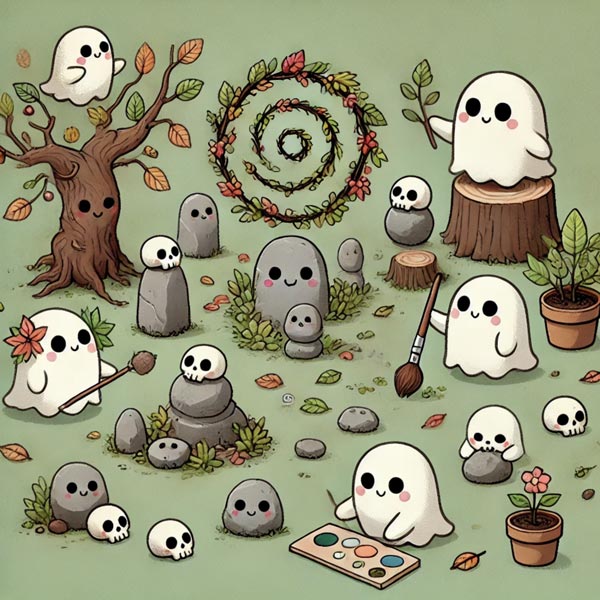
Art and nature have always shared a delicate dance, but in recent years, a new form of art has emerged that directly engages with the natural world: environmental art. This genre is characterized by artworks that use natural materials, occupy outdoor spaces, and often carry a message about our relationship with the environment. Yet, as with any innovative movement, it raises important questions. Is environmental art a groundbreaking way to highlight ecological issues, or does it disrupt and damage the very landscapes it aims to celebrate? In this article, we’ll delve into the dual nature of environmental art, exploring its innovative spirit and the controversies it can stir.
What is Environmental Art?
Environmental art is a broad term that encompasses a range of artistic practices that engage with the natural world. This can include site-specific sculptures, land art, installations, and eco-art projects. The common thread among these works is their focus on nature, either through their materials, their location, or their thematic content. Unlike traditional artworks that are displayed in galleries or museums, environmental art often exists outside, in direct conversation with the environment.
The roots of environmental art can be traced back to the late 1960s and early 1970s with the emergence of land art, also known as Earth art. Pioneers like Robert Smithson, with his monumental “Spiral Jetty,” and Christo and Jeanne-Claude, famous for their large-scale wrapping projects, pushed the boundaries of where and how art could exist. These early works set the stage for a growing movement that continues to evolve today.
There are several types of environmental art, each with its unique approach and intention. Land art typically involves creating large-scale artworks directly in the landscape, often using materials found on site. Eco-art, on the other hand, tends to focus more on sustainability and ecological themes, using art as a medium to advocate for environmental issues. Site-specific installations are designed for particular locations, taking into account the surrounding environment and often altering it in some way.
This diversity within environmental art makes it a rich and complex field. Each piece can serve multiple purposes: as an aesthetic object, a commentary on environmental issues, or even a means of restoration and conservation. Understanding this complexity is key to appreciating the full impact of environmental art.
The Innovative Aspects of Environmental Art
One of the most compelling aspects of environmental art is its boundless creativity and expression. By stepping outside traditional spaces, artists are free to explore new forms and techniques. This freedom often leads to groundbreaking works that challenge our perceptions of both art and nature. Andy Goldsworthy, for instance, creates intricate sculptures using leaves, stones, and ice, which highlight the transient beauty of the natural world. His works are not just art; they are meditations on the passage of time and the fragility of life.
Environmental art also plays a crucial role in raising awareness about ecological issues. Many artists use their work to highlight problems such as climate change, deforestation, and pollution. Olafur Eliasson, for example, is known for his large-scale installations that address the impacts of global warming. His “Ice Watch” installation, which brought melting ice blocks from Greenland to urban centers, served as a stark visual reminder of the urgency of climate action. Such artworks can be powerful tools for education and advocacy, reaching audiences that might not engage with traditional environmental campaigns.
Another innovative aspect of environmental art is how it can integrate with and enhance its natural surroundings. Rather than imposing on the landscape, many works of environmental art aim to harmonize with it, creating a dialogue between the artwork and its environment. Nils-Udo’s projects, which often involve planting trees or arranging natural elements, exemplify this approach. His works are designed to evolve over time, growing and changing with the seasons, and ultimately becoming part of the landscape they inhabit.
These innovative elements of environmental art demonstrate its potential to transform not only the way we think about art but also our relationship with the natural world. By using creativity as a means of engagement, environmental artists can inspire new ways of seeing and interacting with our environment.
The Intrusive Nature of Environmental Art
However, the very qualities that make environmental art innovative can also render it intrusive. One significant concern is the potential environmental impact of these artworks. Large-scale projects, in particular, can alter landscapes and ecosystems in unintended ways. Christo and Jeanne-Claude’s “The Gates,” which involved installing 7,503 gates in Central Park, faced criticism for its environmental footprint. Critics argued that the installation disrupted the park’s natural beauty and could have long-term effects on local wildlife.
Cultural sensitivity is another critical issue. Environmental art projects often occupy spaces that hold cultural and historical significance. Without proper consideration and consultation, these works can be perceived as disrespectful or invasive. For instance, some projects have faced backlash from indigenous communities who view the land as sacred. These conflicts highlight the need for artists to engage with local communities and consider the cultural implications of their work.
Sustainability is also a concern. Many environmental artworks are temporary, raising questions about their long-term environmental impact. The materials used, whether natural or synthetic, can leave behind waste and residues. For instance, while land art often uses natural materials, the process of creating these works can involve significant alteration of the landscape. Moreover, temporary installations, like those involving plastics or other non-biodegradable materials, can contribute to pollution if not properly managed.
These issues underline the importance of considering the balance between innovation and intrusion in environmental art. While these works can offer profound insights and aesthetic experiences, they must also be mindful of their environmental and cultural responsibilities. This balance is crucial for ensuring that environmental art remains a positive force for change.
Balancing Innovation and Intrusiveness
Ethical considerations play a vital role in achieving this balance. Artists must be aware of their responsibility towards the environment and the communities they engage with. This means not only minimizing the environmental impact of their work but also ensuring that their projects are respectful and inclusive. A quote from environmental artist Patricia Johanson captures this sentiment well: “Art should not dominate or destroy its environment but rather contribute to its beauty and diversity.”
There are several best practices that can help artists create environmentally respectful art. First, using sustainable and locally sourced materials can reduce the environmental footprint of a project. Artists like John Grade, who uses biodegradable materials and focuses on the life cycle of his artworks, exemplify this approach. Second, designing works that enhance rather than disrupt natural processes can lead to more harmonious and enduring projects. For instance, creating habitats for wildlife or using art to restore damaged ecosystems can have positive ecological impacts.
Collaborations between artists, environmentalists, and local communities can also yield fruitful results. By working together, these groups can ensure that projects are both artistically and environmentally sound. One successful example is the collaboration between artist Mel Chin and scientists in his “Revival Field” project, which used plants to extract toxins from contaminated soil. This kind of interdisciplinary work not only produces innovative art but also contributes to environmental restoration and community engagement.
Balancing innovation and intrusiveness in environmental art is an ongoing challenge, but it is one that can be met through thoughtful practice and collaboration. By adhering to ethical guidelines and fostering partnerships, artists can create works that are both groundbreaking and respectful of their surroundings.
Public Perception and Reception
Public perception of environmental art is varied and complex. Community engagement is a critical factor in determining how these artworks are received. Projects that involve and respect local communities tend to garner more positive feedback. For example, the “Watershed Sculpture” by Betsy Damon, created in collaboration with local residents, was celebrated for its role in raising awareness about water conservation while enhancing the community’s connection to their local river.
Critics and supporters of environmental art often present contrasting views. Supporters argue that these works are essential for highlighting environmental issues and fostering a deeper connection with nature. They praise the creativity and innovation that environmental art brings to the table. Critics, however, may focus on the potential negative impacts, such as environmental disruption or cultural insensitivity. This dichotomy reflects the broader debate about the role and impact of art in society.
Quotes from art critics, environmental activists, and local residents can provide valuable insights into these differing perspectives. Art critic Michael Kimmelman, for instance, has noted that while some projects can be disruptive, they often provoke important conversations about our relationship with the environment. On the other hand, environmental activist Julia Barnes has criticized certain works for prioritizing artistic vision over ecological integrity.
Ultimately, the reception of environmental art is influenced by a variety of factors, including the project’s scale, its environmental and cultural sensitivity, and its engagement with the public. Successful projects are those that manage to balance these elements, creating works that are not only visually striking but also environmentally and socially responsible.
Conclusion
Environmental art sits at the intersection of creativity and ecological consciousness, offering a unique lens through which we can explore our relationship with the natural world. This genre’s innovative aspects—its ability to raise awareness, integrate with nature, and push artistic boundaries—make it a powerful tool for both artists and environmentalists. However, the potential for intrusion, whether through environmental impact, cultural insensitivity, or sustainability concerns, cannot be overlooked.
As we have seen, the balance between innovation and intrusiveness is delicate and requires careful consideration. Ethical practices, sustainable materials, and collaborative efforts are essential for creating works that respect and enhance their environments. The diverse public reception of environmental art highlights the complexity of this balance, reflecting a wide range of views and experiences.
In the end, environmental art challenges us to think critically about how we interact with our surroundings and inspires us to find creative solutions to ecological issues. Whether you view it as innovative or intrusive, there is no denying the profound impact of environmental art on our understanding of art and nature. So, what do you think? Is environmental art a bold step forward, or does it sometimes overstep its bounds? Share your thoughts and join the conversation about this dynamic and evolving field.




